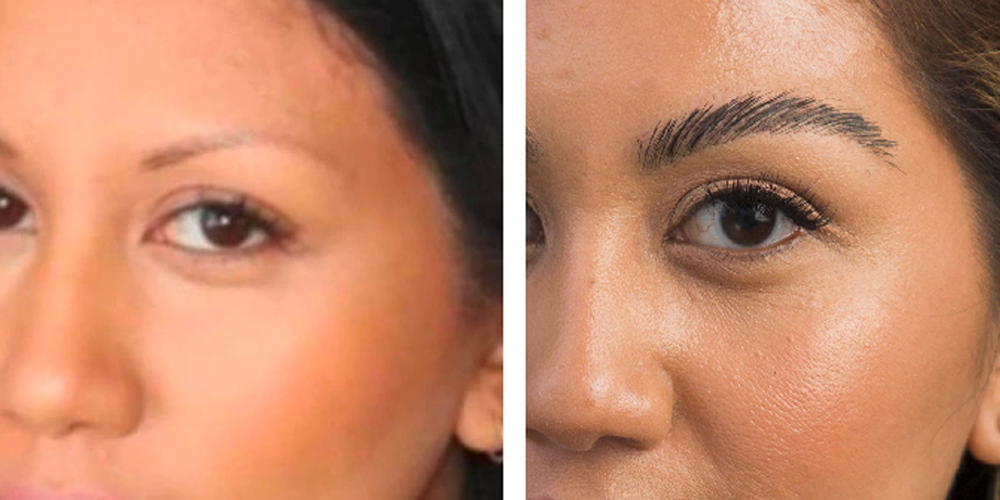Eyebrow hair loss can result from various factors, including medical conditions, lifestyle choices, and natural aging. Common causes include alopecia areata, hormonal imbalances, thyroid disorders, and nutritional deficiencies. Additionally, excessive plucking, waxing, or threading can damage hair follicles, resulting in thinning brows over time. Certain medications, chemotherapy, and skin conditions like eczema or psoriasis can also contribute to eyebrow hair loss. Identifying the root cause is crucial for determining the most effective treatment.
Can Stress Cause Eyebrow Hair Loss?
Yes, stress is a known factor that can trigger hair loss, including in the eyebrow area. Emotional stress, anxiety, or traumatic events can disrupt the hair growth cycle, causing eyebrow hairs to shed prematurely. This condition, known as telogen effluvium, often results in temporary hair loss that may improve once stress levels are managed. Adopting stress-relief practices such as meditation, yoga, and mindfulness can help reduce hair loss caused by emotional strain.
Are There Medical Conditions Linked to Eyebrow Hair Loss?
Several medical conditions can lead to eyebrow hair loss. Alopecia areata is an autoimmune condition that causes patchy hair loss, including on the eyebrows. Hypothyroidism and hyperthyroidism can also result in thinning brows, particularly in the outer third of the eyebrow. Skin conditions such as eczema, psoriasis, and seborrheic dermatitis may cause irritation and inflammation, impacting eyebrow hair growth. Consulting with a healthcare professional is essential for diagnosing and treating any underlying conditions.
Can Nutritional Deficiencies Cause Eyebrow Hair Loss?
Yes, a lack of essential nutrients can significantly impact eyebrow hair growth. Deficiencies in biotin, vitamin D, iron, zinc, and omega-3 fatty acids are common contributors to hair thinning. Ensuring a well-balanced diet that includes leafy greens, lean proteins, and healthy fats can support hair follicle health and promote stronger eyebrow growth.
Is Eyebrow Hair Loss Permanent?
Whether eyebrow hair loss is permanent depends on its cause. Temporary hair loss resulting from stress, nutritional deficiencies, or overplucking often resolves with proper care. However, permanent eyebrow hair loss may occur due to scarring, severe trauma, or certain medical conditions. Treatments like eyebrow transplants, microblading, or topical solutions can help restore natural-looking brows in cases of permanent hair loss.
How Does an Eyebrow Hair Transplant Work?
An eyebrow hair transplant is a surgical procedure that restores fuller eyebrows by implanting healthy hair follicles into the brow area. The process begins with the surgeon extracting hair follicles from a donor site, usually the scalp. These follicles are then meticulously implanted into the eyebrow area following the natural growth pattern. The procedure requires precision to ensure realistic and aesthetically pleasing results. Recovery takes about one to two weeks, and full results are typically visible within six to twelve months.
Are Eyebrow Hair Transplants Safe?
Yes, eyebrow hair transplants are generally safe when performed by experienced professionals. Minor side effects such as redness, swelling, or scabbing are common but typically resolve within a few days. Choosing a qualified surgeon minimizes the risk of complications and ensures optimal results.
How Can I Prevent Eyebrow Hair Loss?
Preventing eyebrow hair loss involves adopting healthy habits and proper grooming techniques. Avoid excessive plucking, waxing, or threading to prevent follicle damage. Maintain a nutritious diet rich in vitamins and minerals that support hair growth. Managing stress, practicing gentle skincare, and using eyebrow serums can also help maintain healthy brows. If you notice persistent hair loss, consult a healthcare provider for early intervention
Are Eyebrow Growth Serums Effective?
If you experience persistent eyebrow hair loss, thinning patches, or signs of irritation, it’s advisable to consult a specialist. A dermatologist, trichologist, or hair transplant surgeon can diagnose the cause of your hair loss and recommend appropriate treatments. Early intervention often leads to better outcomes and helps restore fuller, natural-looking eyebrows more effectively.
How Much Does an Eyebrow Hair Transplant Cost?
The cost of an eyebrow hair transplant can vary depending on several factors, including the clinic’s location, the surgeon’s experience, and the number of grafts required. On average, you can expect to pay between $3,000 to $6,000 for the procedure. Clinics in major metropolitan areas may charge higher fees due to increased demand and overhead costs. Additionally, the complexity of the procedure, such as achieving specific shapes or density levels, can influence the final price. Most eyebrow transplant procedures involve transplanting individual hair follicles from the scalp to the brow area, ensuring natural growth and long-lasting results. While the initial cost may seem significant, this treatment is considered a permanent solution compared to temporary alternatives like microblading or brow tinting.
Conclusion
Struggling with eyebrow hair loss can be frustrating, but understanding the causes and available treatments can empower you to regain fuller, natural-looking brows. Whether you choose topical solutions, natural remedies, or eyebrow hair transplants, addressing the problem early can improve results. Consulting with a specialist and maintaining healthy habits are key steps to restoring confidence in your appearance. If you’re facing eyebrow hair loss, know that effective solutions are available to help you achieve the brows you desire.

